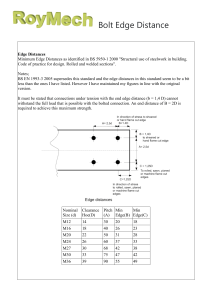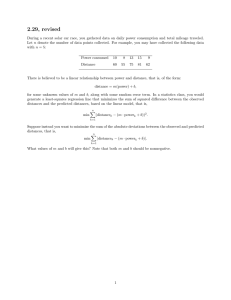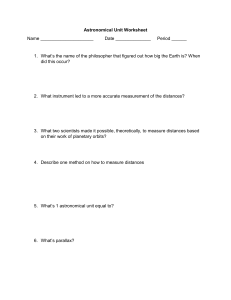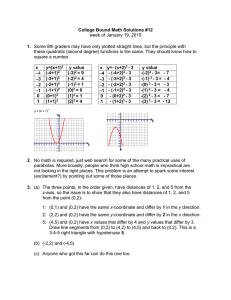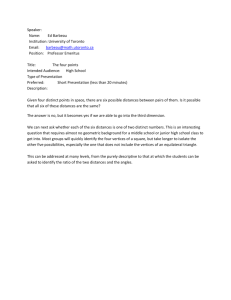Estimated vs. True Distances in New Zealand: A Regression Analysis
advertisement
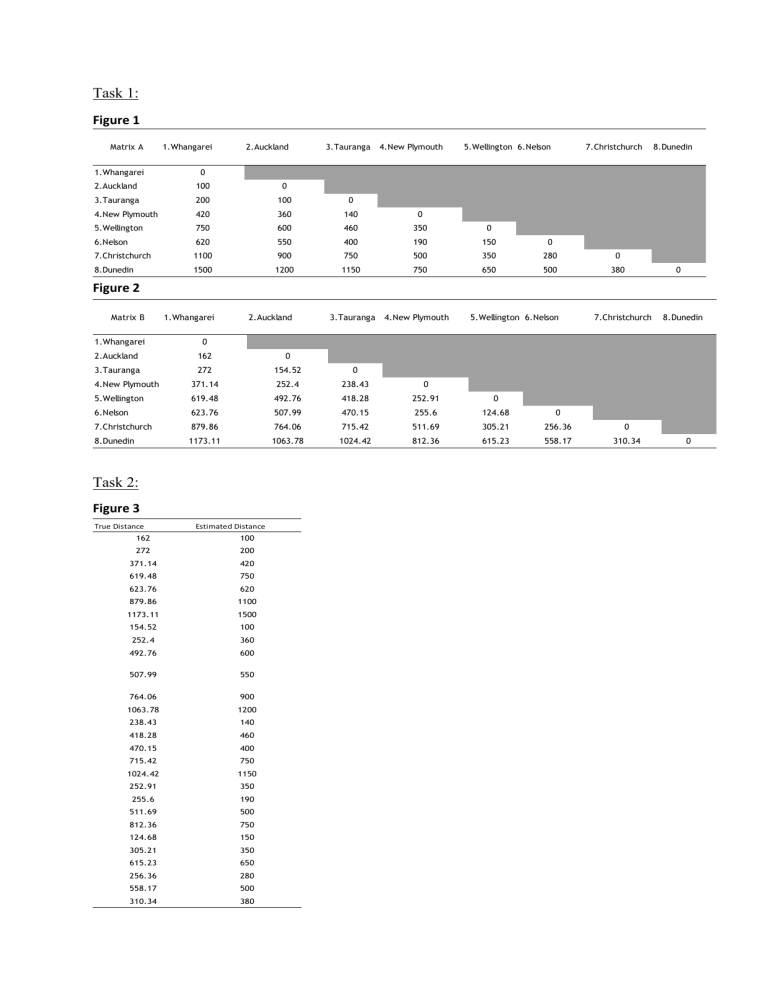
Task 1: Figure 1 Matrix A 1.Whangarei 1.Whangarei 2.Auckland 3.Tauranga 4.New Plymouth 5.Wellington 6.Nelson 7.Christchurch 8.Dunedin 0 2.Auckland 100 0 3.Tauranga 200 100 0 4.New Plymouth 420 360 140 0 5.Wellington 750 600 460 350 0 6.Nelson 620 550 400 190 150 0 7.Christchurch 1100 900 750 500 350 280 0 8.Dunedin 1500 1200 1150 750 650 500 380 1.Whangarei 2.Auckland 0 Figure 2 Matrix B 1.Whangarei 3.Tauranga 4.New Plymouth 5.Wellington 6.Nelson 7.Christchurch 0 2.Auckland 162 0 3.Tauranga 272 154.52 0 4.New Plymouth 371.14 252.4 238.43 0 5.Wellington 619.48 492.76 418.28 252.91 0 6.Nelson 623.76 507.99 470.15 255.6 124.68 0 7.Christchurch 879.86 764.06 715.42 511.69 305.21 256.36 0 8.Dunedin 1173.11 1063.78 1024.42 812.36 615.23 558.17 310.34 Task 2: Figure 3 True Distance 8.Dunedin Estimated Distance 162 100 272 200 371.14 420 619.48 750 623.76 620 879.86 1100 1173.11 1500 154.52 100 252.4 360 492.76 600 507.99 550 764.06 900 1063.78 1200 238.43 140 418.28 460 470.15 400 715.42 750 1024.42 1150 252.91 350 255.6 190 511.69 500 812.36 750 124.68 150 305.21 350 615.23 650 256.36 280 558.17 500 310.34 380 0 Figure 4 Scatter Plot of Estimated Distance vs True Distance Figure 5 Regression Table for Estimated Distance vs True Distance SUMMARY OUTPUT Regression Statistics Multiple R 0.98 R Square 0.9541 Adjusted R Square 0.95 Standard Error 78.67 Observations 28 Coefficients Standard Error t Stat P-value Lower 95% Upper 95% Lower 95.0% Upper 95.0% Intercept -63.82 30.31 -2.11 0.05 -126.13 -1.51 -126.13 -1.51 True Distance 1.2098 0.05 23.24 6.43E-19 1.10 1.32 1.10 1.32 ANOVA df MS F 1 3342078.96 3342078.96 539.98 Residual 26 160921.04 6189.27 Total 27 3503000 Regression SS Significance F 6.4E-19 Task 3: Multiple regression analysis was used to test the accuracy between my estimated distances between pairs of cities in New Zealand, and its true distances. My estimates were captured by a straight line, maintaining a close estimation to the true distances. A small degree of freedom indicates a strong correlation between our two variables, suggesting that my mentally mapped estimated distances were close in accuracy. The Multiple R value of 0.98 indicates a very strong linear relationship between the two variables. A significant p value indicates statistical significance of the regression model. The slope of the best fitting line is y =1.2098x - 63.82. The negative coefficient value -63.82 reveals that as the estimated distance increases, the true distance decreases. There is a significant decrease between the values of the true distances with the estimated distances, t(1) = -2.11. This suggests that I tended to overestimate the value of linear distances between city pairs when mental mapping; this is also evident in Figure 3. The results of the regression indicate that 95.41% of the variance in the true distances can be explained by the estimated distances (R2 =0.9541, F(1, 539.98) = 6.43, p = 0.05).
